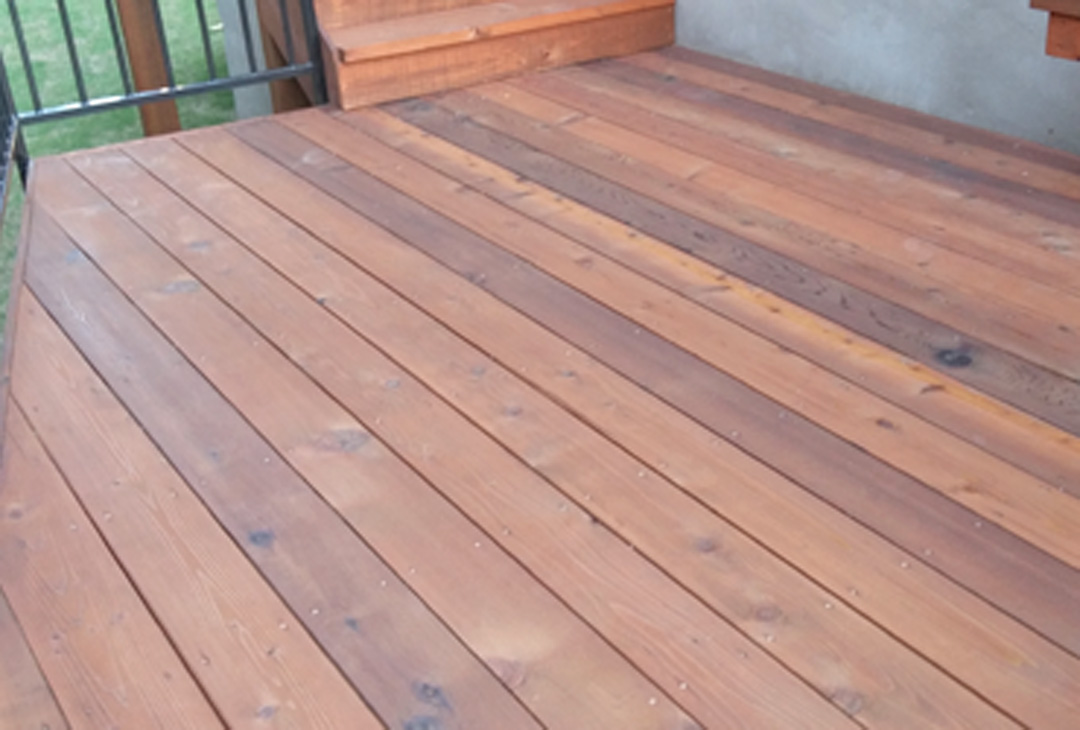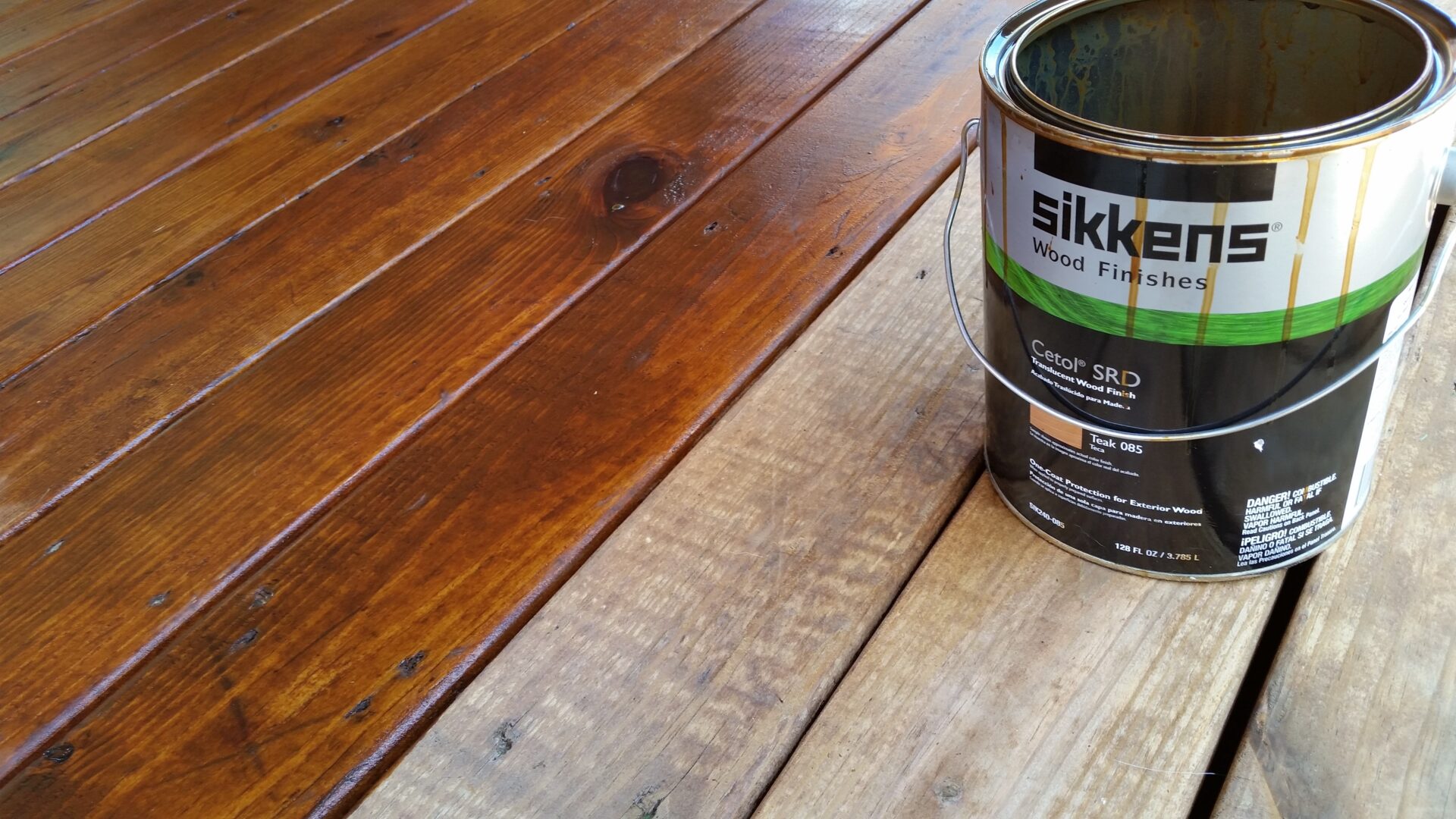Deck Discoloration 101: Every Little Thing You Need to Know for a DIY Task
From preparing the deck surface area to selecting the ideal kind of stain and grasping the application strategies, each action plays an important duty in achieving an expert surface. Join us as we untangle the important standards and expert tips for mastering the art of deck staining, making sure an effective DIY project that will leave your deck looking flawless.
Relevance of Deck Staining
Deck staining is an important maintenance job that maintains the long life and look of outside wooden frameworks. By using a layer of stain to the deck's surface, you develop a safety barrier that helps prevent dampness infiltration, UV damage, and rotting of the timber.
It gives a chance to tailor the appearance of the deck by picking from a variety of tarnish colors and surfaces. In significance, regular deck discoloration is a simple yet efficient way to ensure your deck continues to be structurally sound and visually pleasing for years to come.
Deck Prep Work Steps

After cleaning and fixing, fining sand the deck is needed to smooth out harsh surfaces and open up the wood's pores to far better soak up the tarnish. When the deck is clean, dry, and smooth, shield any kind of neighboring plants, furniture, or surfaces with a drop towel prior to applying the deck stain.
Picking the Right Spot
Choosing the suitable stain for your deck is an essential choice that directly impacts both its look and longevity. When picking the best stain, there are numerous aspects to think about to ensure an effective DIY task.
To start with, you need to determine between clear, semi-transparent, and solid spots. Clear stains permit the natural grain of the wood to reveal through however supply minimal security versus UV rays and moisture. Semi-transparent spots give a compromise in between shade and protection, while solid spots supply the most security yet cover the wood grain.
Next, think about the sort of wood your deck is made of, as various discolorations function better with specific timber varieties. For cedar, example and redwood decks often look best with a semi-transparent or clear tarnish to highlight their all-natural beauty. Pressure-treated wood might gain from a solid discolor to conceal flaws.
Finally, aspect in the visite site environment in your location. If you experience rough winters or intense sunlight, opt for a stain with UV protection and resistance to extreme weather. By very carefully thinking about these aspects, you can select a discolor that improves your deck's aesthetics and longevity.

Using Discoloration Properly
When considering the application of tarnish to your deck, it is necessary to pay very close attention to the specific characteristics of the stain chosen and how it communicates with the sort of wood and environmental conditions previously deliberated. Prior to beginning the discoloration procedure, make sure that the deck surface is clean, dry, and free of any previous coverings or debris. It is advised to examine the picked discolor on a little unnoticeable area of the deck to ensure compatibility and attain the wanted color and finish.
When applying the tarnish, make use of a brush, roller, or sprayer , adhering to the supplier's directions for the particular product. Job in workable sections to stay clear of lap marks and make sure even insurance coverage. Use the stain along the size of the deck boards to avoid unequal pooling. It is critical to work with the wood grain to boost the natural elegance of the deck and enable better infiltration of the discolor. Consider using a 2nd coat if needed for a more resilient coating and improved security versus the components.
Upkeep and Treatment Tips

Another crucial aspect of deck upkeep is shielding it from the aspects. On a regular basis Read Full Report trimming nearby foliage can additionally protect against fallen leaves and branches from building up on your deck and causing potential damages.
Conclusion
To conclude, deck discoloration is a vital action in maintaining the look and long life of your outside space. By effectively preparing the deck, selecting the best stain, using it properly, and following upkeep suggestions, you can ensure a long lasting and gorgeous coating that will certainly last for years ahead. Remember to regularly care and examine for your discolored deck to keep it looking its finest.
Join us as we unwind the crucial her response standards and insider ideas for mastering the art of deck discoloration, guaranteeing an effective DIY job that will leave your deck looking flawless. - deck cleaning nashville
In essence, normal deck staining is an easy yet reliable way to ensure your deck continues to be structurally audio and visually pleasing for years to come.
When the deck is tidy, dry, and smooth, secure any kind of nearby plants, furnishings, or surface areas with a drop cloth prior to using the deck stain.Next, think about the kind of timber your deck is made of, as different stains work much better with particular wood species.When thinking about the application of tarnish to your deck, it is essential to pay close interest to the certain features of the tarnish chosen and how it communicates with the kind of timber and ecological problems formerly mulled over.